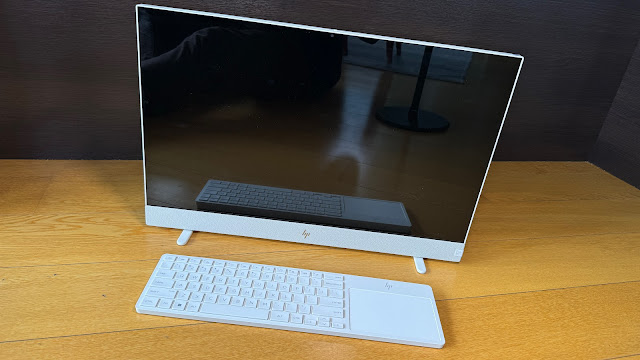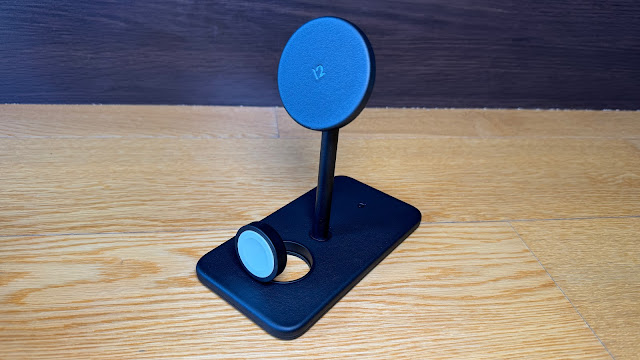We're all content creators now, aren't we?
Even if it's just a video for your family and friends showing them around the resort you're staying at on holiday, you still want it to be good.
What if you're a travel agent and you need to use that video to impress your customers?
What if you want to stream that video to the world?
Sure, it needs to look good - that comes down to what kind of camera you're using - but how will it sound? No point yakking away if all your words will be blown away before they get recorded.
There are plenty of podcasting mics on the market but that's not going to be much help when you're out and about and besides, there's nothing very natural about having to share the shot with a big, fat microphone.
That's why Shure now brings you quite the opposite.
Although Shure has a long history of delivering audio excellence and while I've definitely used Shure products over the years, I've never reviewed something from Shure until now. So in terms of a good first impression, I don't think I could do much better than the MoveMic Two Receiver Kit.
The kit is essentially made up of four main components; two MoveMic lavalier microphones, their charging case and the MoveMic Receiver - which I'll get to soon enough.
Starting with the MoveMics themselves though, they're absolutely tiny. It's kind of ironic, given the microphone Shure is probably most famous for is that groovy, oversized, Unidyne design artists like Elvis were famous for caressing in one hand while they sang. The MoveMics couldn't be more different, with their durable construction, firm springloaded clip and wireless charging case.
Shure promises about eight hours use on a full charge, which is impressive enough. You'll get another two full charges from the case which is not much bigger than the charging case for most true wireless earbuds. In fact, using the MoveMics is a very similar experience to using earbuds; as long as you put the case on to charge when not in use, you should never be caught short.
These mics really are very inconspicuous. I've used wireless theatre mics before and while they're smaller still - usually able to be disguised in your hair, worked into your costume or sometimes just taped to your face, that sort of microphone still needs to be wired into a mic pack stashed away somewhere else on your person - usually in a pocket or often just stuffed down the back of your underwear.
Shure's little MoveMics are entirely self-contained and can be clipped anywhere; collars, pockets - even on hats or jewellery.
The great thing about this pack is there's a MoveMic for you and one for your guest, which they can clip on easily themselves - no socially awkward and potentially inappropriate frisking required.
Once charged it's a simple matter of pairing them with your phone via the Shure Motiv Video app (Android or iOS). There's also an audio-only Motiv app but that seems a bit redundant unless all you want to do is make sound recordings.
The catch here is you can't pair your MoveMics with your phone directly - you must use one of the Motiv apps - but the good news is, Motiv Video is a very good mobile camera app, with a list of features you're unlike to find on your phone's default camera interface.
Not only can you adjust gain levels, EQ and compression for each mic individually, you can also alter sample rates, video resolution and yes, there's a noise-reduction toggle which is so crucial when you're recording outdoors.
In the video below, I've done a little demonstration of just how superior the MoveMic audio quality is compared to the default, built-in mic on my phone. I think you'll be impressed. Fortunately, the MoveMics are rated IPX4 for splash resistance, so you can take them out in the elements without too much worry.
There are preset EQs for speech or singing, or you can leave it flat and create your own.
Motiv Video even lets you stream directly to Facebook Live. Alternatively, you can set up a live stream on a different platform and just punch in the link to connect.
But for real flexibility, you need the Motive Receiver. This is about the same shape and size of a small digital action camera but instead of a lens, it has a wee colour display so you navigate through the various pairing and settings menus. The receiver is attached to a universal fitting so you can mount it on a DSLR camera and you can connect via USB-C or AUX cable.
This means the Shure MoveMics can become your next podcasting mic, with the Receiver plugged into your computer. Plug it into your phone for use with any recording app. Plug it into your camera for an instant audio boost to your next vlog. Maybe even plug it into an amp or a sound desk for that big presentation or performance.
The MoveMic Receiver offers you most, if not all of the features and tweaks you'll find on the app and the handy thing is, any customisations you make will stay with the paired mics, no matter which device you plug the receiver into.
The whole package results in a highly professional end-product and you'll easily hear the difference it makes in the video below. What's more, given the MoveMics easily clip on, your hands are then free to gesture, demonstrate or maybe even play an instrument - I keep thinking of different ways you could use the MoveMic Two Receiver Kit every day.
Click here for more information on the Shure MoveMic Two Receiver Kit.























